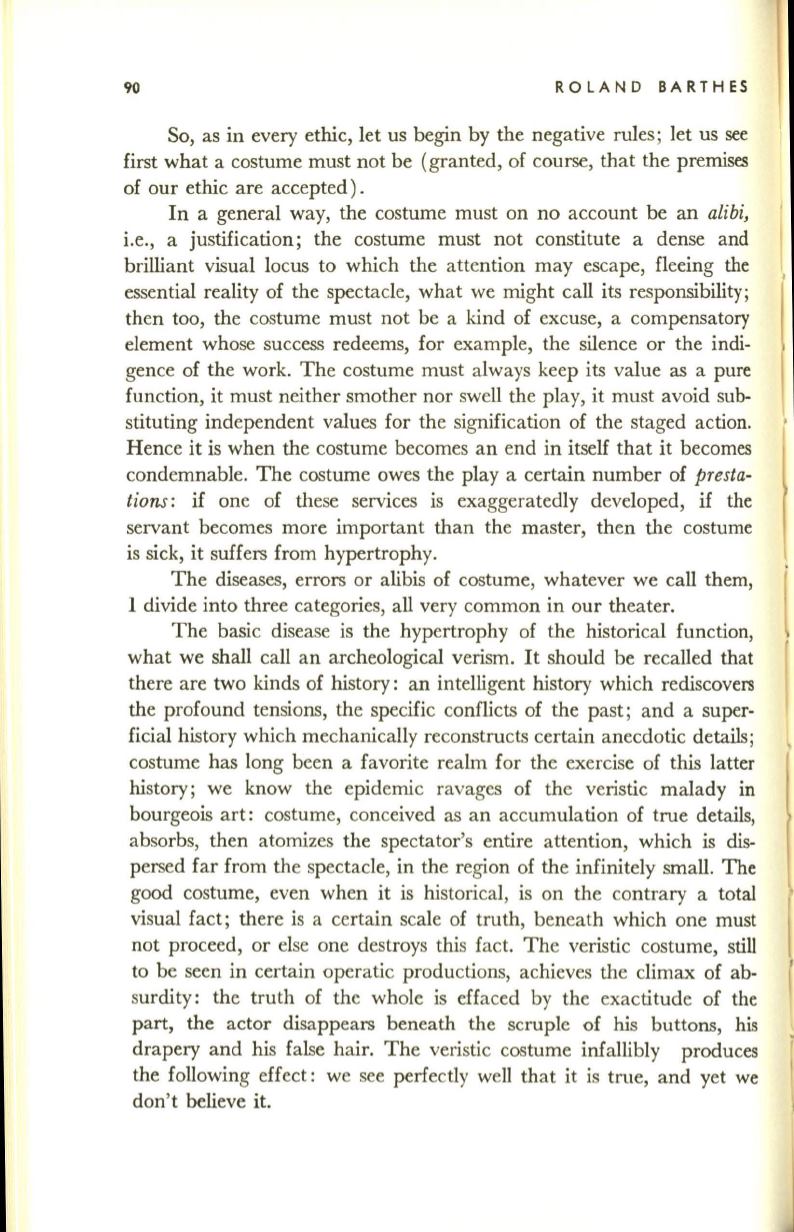
90
ROLAND BARTHES
So, as in every ethic, let us begin by the negative rules; let us see
first what a costume must not be (granted, of course, that the premises
of our ethic are accepted).
In a general way, the costume must on no account be an
alibi,
i.e., a justification; the costume must not constitute a dense and
brilliant visual locus to which the attention may escape, fleeing the
essential reality of the spectacle, what we might call its responsibility;
then too, the costume must not be a kind of excuse, a compensatory
element whose success redeems, for example, the silence or the indi–
gence of the work. The costume must always keep its value as a pure
function, it must neither smother nor swell the play, it must avoid sub–
stituting independent values for the signification of the staged action.
Hence it is when the costume becomes an end in itself that it becomes
condemnable. The costume owes the playa certain number of
presta–
lions:
if
one of these services is exaggeratedly developed, if the
servant becomes more important than the master, then the costume
is sick, it suffers from hypertrophy.
The diseases, errors or alibis of costume, whatever we call them,
I divide into three categories, all very common in our theater.
The basic disease is the hypertrophy of the historical function,
what we shall call an archeological verism. It should be recalled that
there are two kinds of history: an intelligent history which rediscovers
the profound tensions, the specific conflicts of the past; and a super–
ficial history which mechanically reconstructs certain anecdotic details;
costume has long been a favorite realm for the exercise of this latter
history; we know the epidemic ravages of the veristic malady in
bourgeois art: costume, conceived as an accumulation of true details,
absorbs, then atomizes the spectator's entire attention, which is
dis–
persed far from the spectacle, in the region of the infinitely small. The
good costume, even when it is historical, is on the contrary a total
visual fact; there is a certain scale of truth, beneath which one must
not proceed, or else one destroys this fact. The veristic costume, still
to be seen in certain operatic productions, achieves the climax of ab–
surdity: the truth of the whole is effaced by the exactitude of the
part, the actor disappears beneath the scruple of his buttons, his
drapery and his false hair. The veristic costume infallibly produces
the following effect: we see perfectly well that it is true, and yet we
don't believe it.


